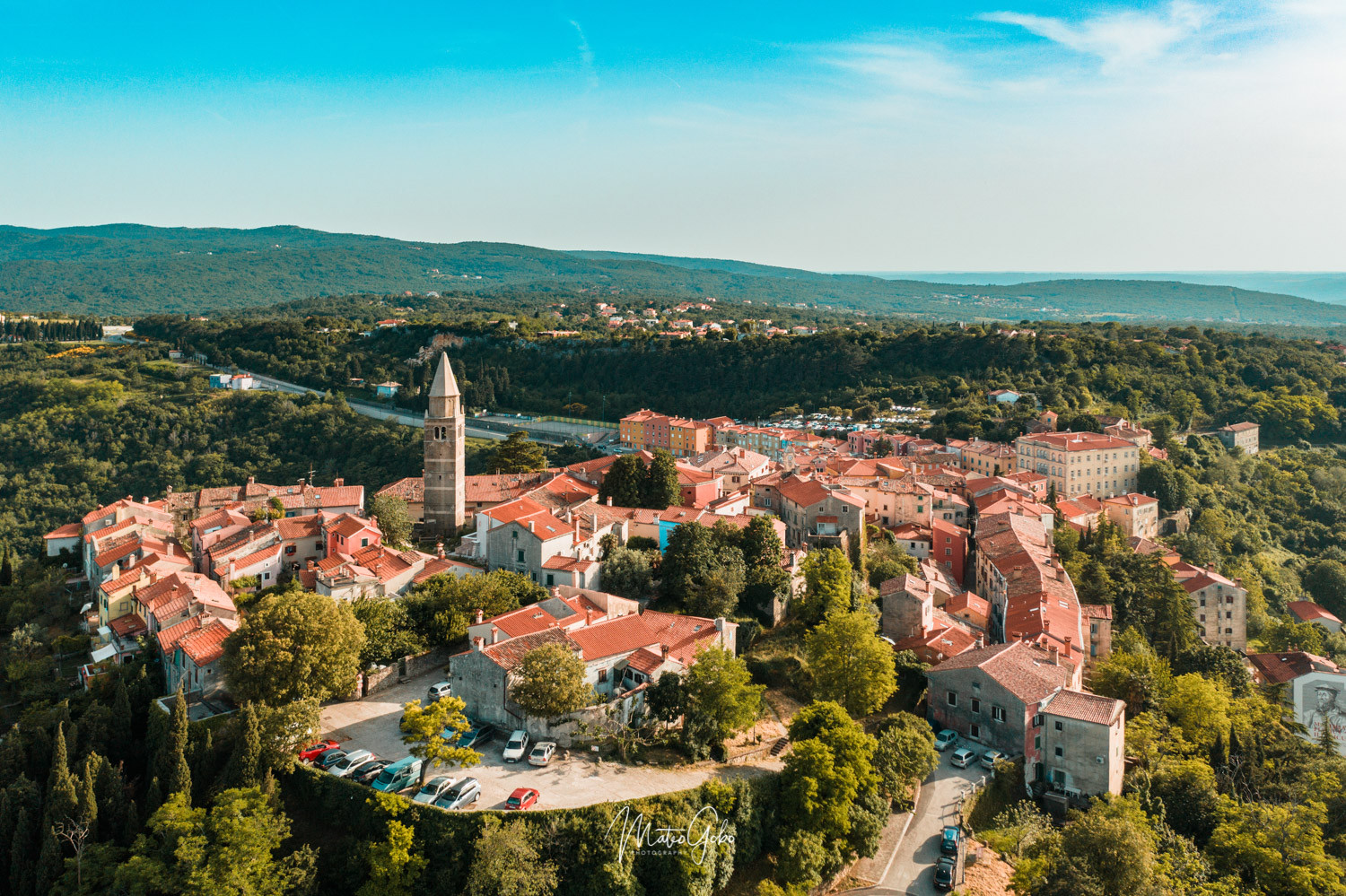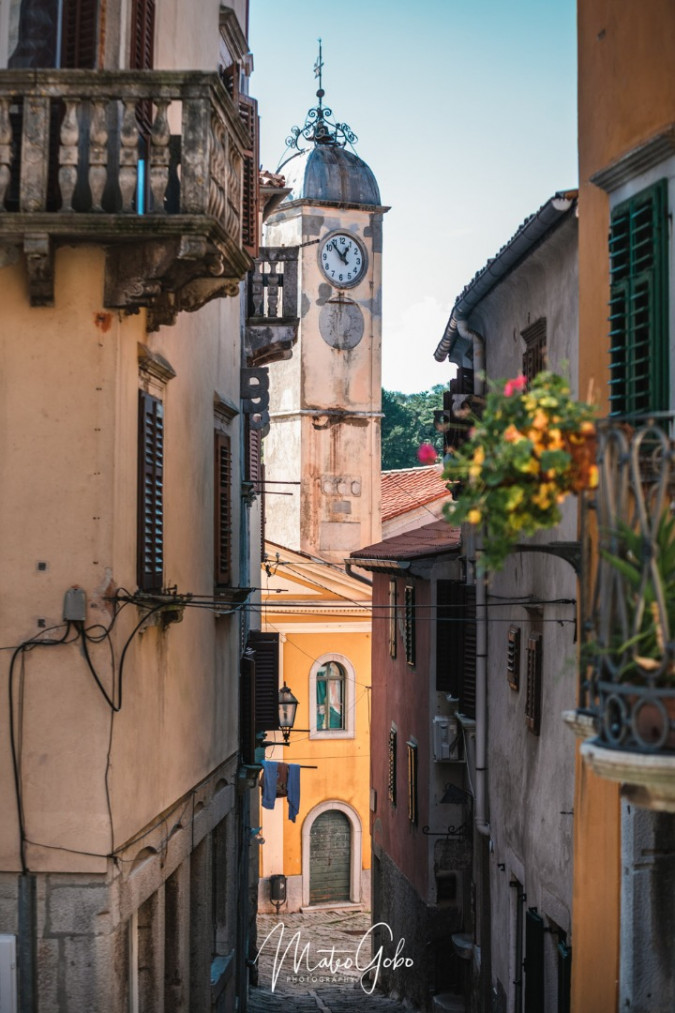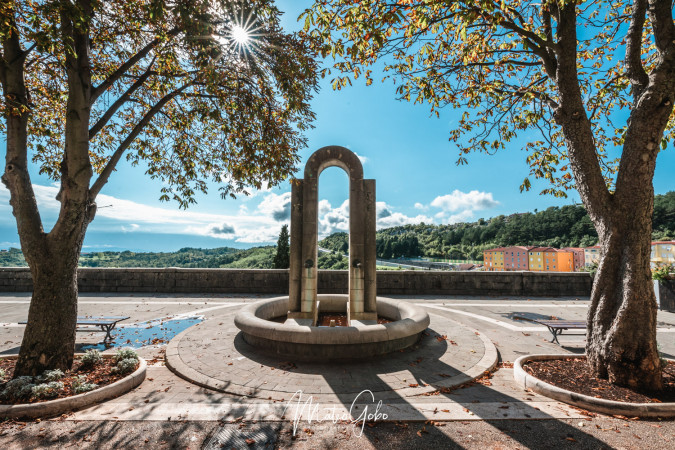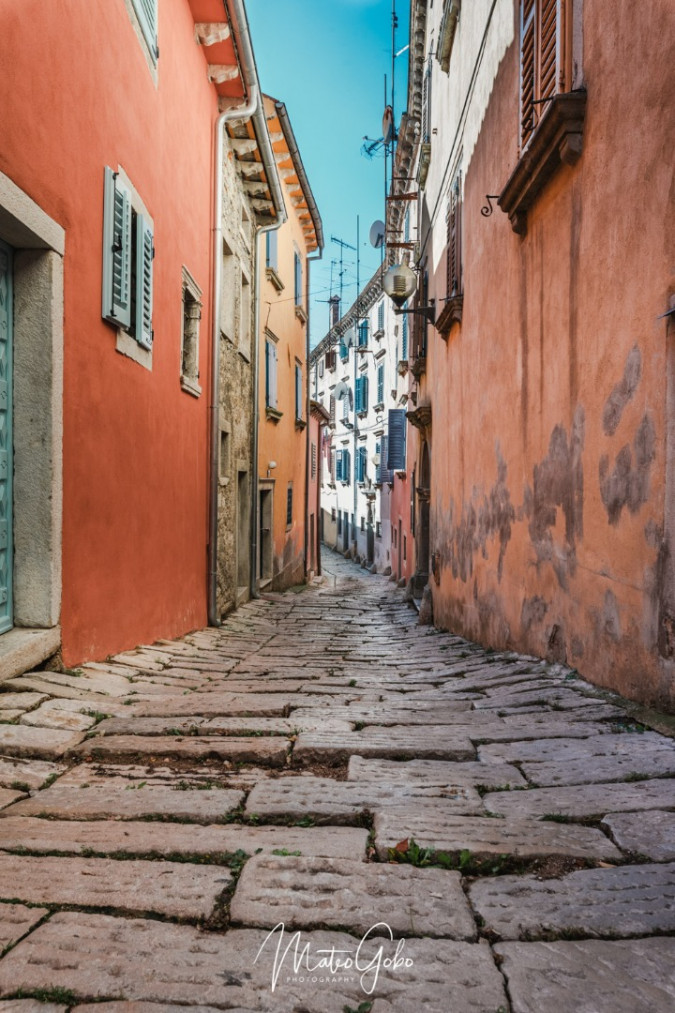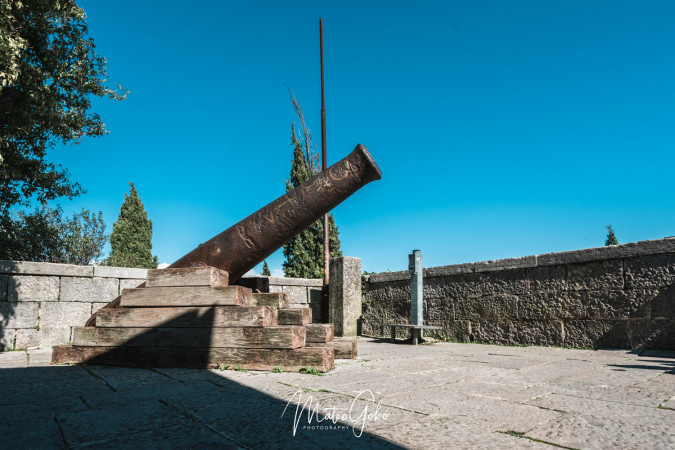Beram
It is certainly worth visiting the Beram because of the gastronomic pleasure offered by Beram tavern.
In the church of St. Maria is one of the most famous fresco The dance of the dead
Beram is on of the longest residential settlements in Istria. Studies of the prehistoric necropolis on the southern slopes of Beram showed with certainly that there was a settlement here in the iron age. The stony hill above the fertile valley was ideal place for a settlement fort type surrounded by a simple rough wall that followed the configuration of terrain. Later in the ruins of these walls the Roman fortifications and medieval castles are walled up. And today in Beram is preserved a timeless arrangement of streets from ancient times. Beram fort in its first phase (up to 7th century BC) included the same area as today. Even today the entrances of the settlement have the same name: Large and small door. Outside the castle on the south side of hill there was necropolis – a place where the deceased were burning and buried. Through the times the fort was growing on south side and necropolis was moving outside the walls.
Church of St. Maria in a cemetery 1 km northeast of Beram preserves in its interior one on of the most valuable achievements of Istrian medieval painting. Well preserved late gotic frescoes which covers almost all the interior walls in church and they are made by Vincent from Kastav. The pictures were made according to the order of the Beram fraternity of St. Maria so the most of the space is dedicated to the scenes from Maria and Jesus life.
The strongest impression is inspired by the fresco Dance of the dead, where the kings, merchants, cardinals and even the same Pope are dancing in front of our eyes with hand to hand with dead. In the XVIII. century in period of baroque, the church is extended and renovated and because of that some part of frescoes is destroy or damaged. All the frescoes are painted and hidden. They were discovered and restored in 1913.
